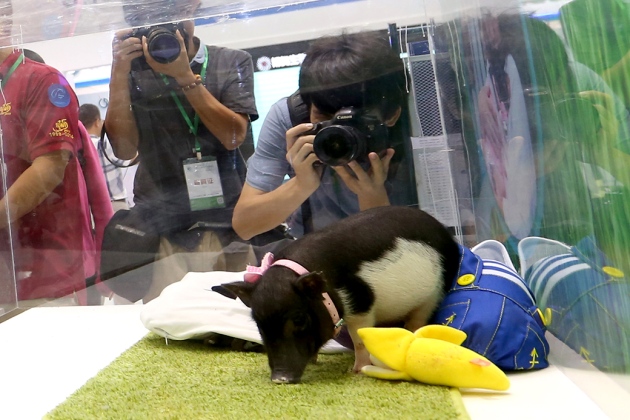- Complementary effects of species and genetic diversity on productivity and stability of sown grasslands. Species diversity good for total production, genetic diversity good for regular production throughout the year, regardless of water. And more, and more.
- Genetic Diversity and Population Structure Patterns in Chinese Cherry (Prunus pseudocerasus Lindl) Landraces. Perhaps 2 domestication sites.
- Inter-individual variation promotes ecological success of populations and species: evidence from experimental and comparative studies. More diverse populations are less vulnerable to environmental changes, more stable in population size, less extinction prone, have better establishment success and larger ranges, especially under stress.
- Ecogeography and utility to plant breeding of the crop wild relatives of sunflower (Helianthus annuus L.). Many close relatives of the crop in extreme environments.
- Domestication of small-seeded lima bean (Phaseolus lunatus L.) landraces in Mesoamerica: evidence from microsatellite markers. Two domestications events. Maybe.
- Trends in genetic diversity for all Kennel Club registered pedigree dog breeds. Popular sires have made for a lot of inbreeding, but this has been getting better of late.
- The N’Dama dilemma: ethnogenetics and small ruminant breed dynamics in the tsetse zone, The Gambia. Saving the name is not enough.
- The Pig and the Chicken in the Middle East: Modeling Human Subsistence Behavior in the Archaeological Record Using Historical and Animal Husbandry Data. Chickens replaced pigs in the first millennium Middle East because they were smaller and more efficient. Oh, and eggs.
Brainfood: Wild wheat breeding, Global pea breeding, Old Swedish peas, Prolific Chinese pigs, Genomics & CC, Veggies & food security, Agrobiodiversity use, Land use double, Agrobiodiversity use
- Genealogical analysis of the use of aegilops (Aegilops L.) genetic material in wheat (Triticum aestivum L.). 1350 varieties in 50 years, involving mainly 3 wild species, the proportion of total releases using wilds steadily growing. But many pedigrees may be wrong. Not to mention the taxonomy.
- Pea. In the Grain Legumes volume of the Handbook of Plant Breeding, that is. Two cultivated species, >70,000 accessions, 28+ national and international collections, yield gains of 2% per year over past 15 years, plus good progress in lodging, disease resistance and seed visual quality and modest improvement in abiotic (heat, frost, salinity and herbicide resistance) stress resistance. Genome on the way.
- Diversity in local cultivars of Pisum sativum collected from home gardens in Sweden. Add about 70 to that number of genebank accessions.
- Genetic diversity and population structure of six Chinese indigenous pig breeds in the Taihu Lake region revealed by sequencing data. They are indeed pretty much 6 breeds. The most prolific in the world too, apparently.
- Global agricultural intensification during climate change: a role for genomics. ‘Course there is.
- The Role of Vegetables and Legumes in Assuring Food, Nutrition, and Income Security for Vulnerable Groups in Sub-Saharan Africa. ‘Course there is.
- Drivers for global agricultural land use change: The nexus of diet, population, yield and bioenergy. Livestock, in a word.
- Resolving Conflicts between Agriculture and the Natural Environment. You need “policies dedicating high-quality habitat towards nature conservation, while encouraging intensive production on existing farmland with stringent limits on environmental impacts.” But see above; although they do say in the previous paper that the trend has been slowing lately.
- Using our agrobiodiversity: plant-based solutions to feed the world. “…the preservation and development of existing agrobiodiversity has not been given sufficient attention in the current scientific and political debates concerning the best strategy to keep pace with global population growth and increasing demand for food.”
Pocket pigs are back, and this time they’re for real

It’s one way to fund cutting-edge research: BGI, the Chinese genomics institute, is offering its micro-pigs for sale as pets.
[T]he institute quoted a price tag of 10,000 yuan (US$1,600) for the micropigs, but that was just to “help us better evaluate the market”, says Yong Li, technical director of BGI’s animal-science platform. In future, customers will be offered pigs with different coat colours and patterns, which BGI says it can also set through gene editing.
This website is known for its devotion to pocket pigs, but please, if you want one, don’t call us. Call Nature, which has all the details.
You’ll need pockets both large and deep:
The animals weigh about 15 kilograms when mature, or about the same as a medium-sized dog.
Nibbles: Oyster wars, Bitter veggies, Saffron, Ag & development, Cannabis taxonomy, Mold evolution, Svalbard & ICARDA, Blueberry taste
- The land sparing vs sharing debate encapsulated in a controversy over San Francisco oyster farming.
- Bitter is good.
- BBC’s Farming Today on saffron in England, among other things.
- Want sustainable development? Invest in agriculture.
- Growing weed: here comes the science.
- “When you chew on a Camembert rind, you’re eating a solid mat of mold.” And probably GM to boot.
- Why do I sound so totally unprepared?
- Breeding better blueberries.
Nibbles: Pig landrace, Campbell’s Soup tomato, HarvestPlus, CG & SDGs, Georgian wine, American vegetables, Kenya & nutrition, Equator Prize, Wheat breeding
- So there’s a “celebrity pork expert.” No, not David Cameron, Carl Blake.
- Nevermind about resurrecting pig breeds, how about resurrecting “America’s best tomato“?
- Mapping biofortification outreach.
- CG writes letter to heads of state on SDGs. But will they listen?
- How they store wine in Georgia.
- US needs more veggies. Don’t we all.
- Kenya is a nutrition star.
- The Equator Prize 2015 winners are in.
- Article on wheat illustrated with picture of millet labelled sorghum